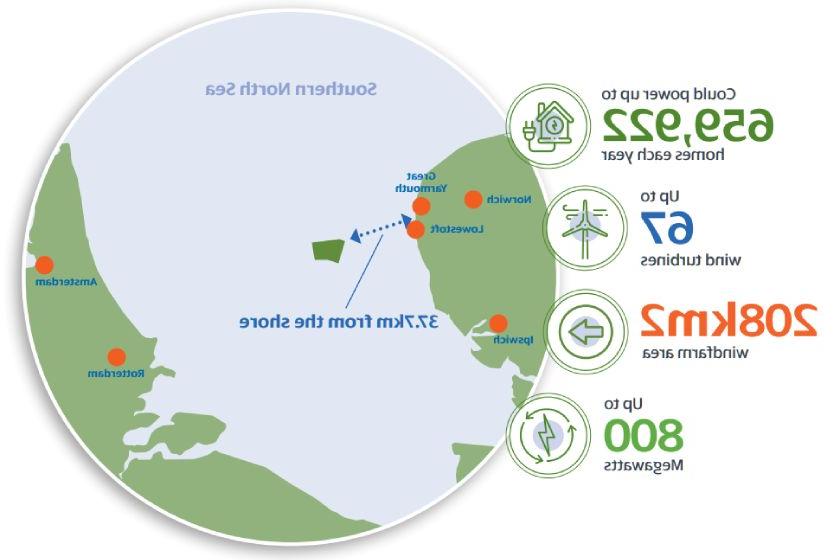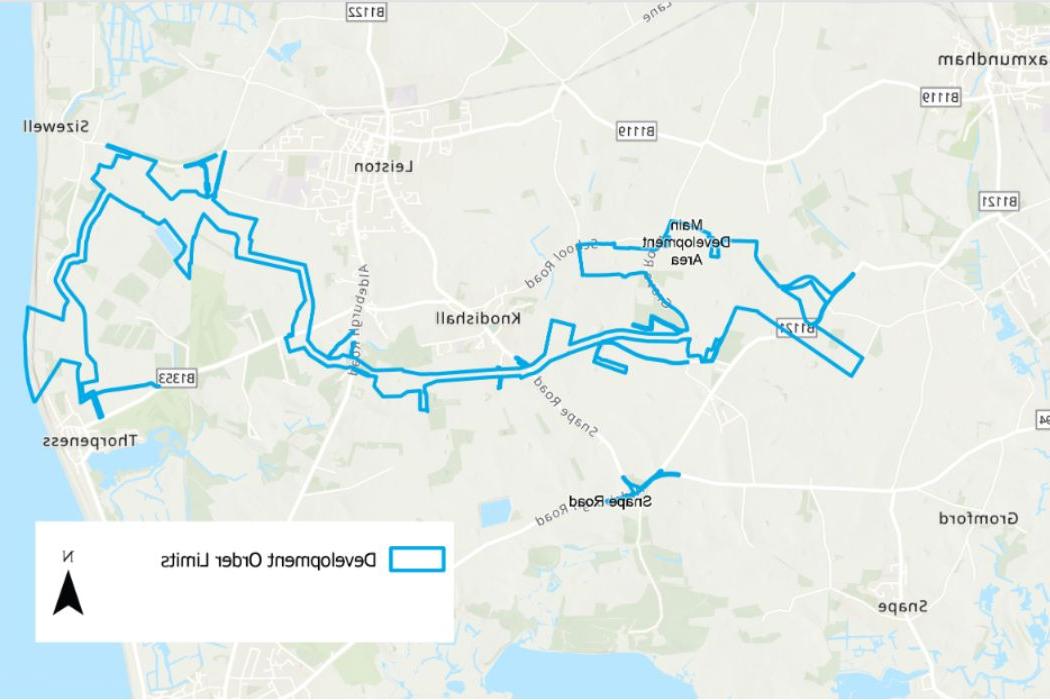East Anglia ONE North is part of the East Anglia Hub and was consented in March 2022 jointly with East Anglia TWO.

The Project
East Anglia ONE North Ltd is developing an offshore windfarm in the southern North Sea approximately 37.7km from the Suffolk coast at its nearest point to Lowestoft.
The windfarm has the potential to make a substantial contribution to UK 2030 energy targets by meeting nearly 5% of the UK offshore wind cumulative deployment target for 2030.
Offshore development
The offshore development area comprises of:
- Wind turbines – up to 67 wind turbines would cover an area of 208km2. The maximum height to the blade tip would be 282m above sea level.
- Offshore platforms – up to four electrical platforms connected by platform link cables to collect the electricity, a construction, operation and maintenance platform and a meteorological mast.
- Subsea cables – inter-array cables connect the turbines to the offshore electrical platform. A maximum of two export cables, buried or protected on the seabed will then transport the electricity to shore. The two cable routing options are the preferred choice in terms of engineering and environmental constraints.

Onshore development
The onshore development area comprises of:
- Landfall location – Horizontal Directional Drilling (HDD) will be required to install the ducts to avoid any construction works on the beach, and a minimum setback distance of 85m from the cliff top will allow for natural coastal erosion based on the potential 100-year erosion prediction and will not compromise the integrity of the cliff.
- Underground cables – up to six single core onshore cables will be buried for a maximum of 9km. For the majority of the route, trenching will be undertaken in which to place the ducts through which the cables are pulled.
- Public highways – a number of road improvements or modifications will be required to facilitate the ingress and egress from the public highways for construction access or at locations on the existing public road network in order to facilitate construction traffic and/or construction-related deliveries.
- Onshore substation – a maximum building height of 14m and external electrical equipment (with the exception of lightning protection masts) of up to 14m in height from finished ground level is proposed and the substation will cover an area of 32,300m2 (190x170m).
- National Grid substation – to accommodate the electricity produced by East Anglia TWO (and East Anglia ONE North) an Air Insulated Switchgear (AIS) or Gas Insulated Switchgear (GIS) substation would be required. The maximum height of the AIS would be 6m with a footprint of 145x310m and the maximum height of the GIS would be 16m with a footprint of 120x140m.
- National Grid realignment works – up to one additional pylon within the vicinity of the National Grid substation as well as up to three cable sealing end compounds, up to one cable sealing end (with circuit breaker) compound, and potentially additional strengthening or modification works within the overhead line realignment works area will be required for East Anglia ONE North (and East Anglia TWO).

Once constructed, the windfarm would operate for up to 25 years.
Background
The East Anglia ONE North project, which is wholly owned by ScottishPower Renewables, alongside East Anglia TWO will be the last of our four East Anglia projects to be developed.
Public engagement on the project began in 2017, with a series of public consultation activities continuing until early 2019. An application for development consent was submitted to the Planning Inspectorate in October 2019.
Following application acceptance, an examination of the projects concluded on 6 July 2021 and The Secretary of State approved the application for consent on 31 March 2022.
[1] As measured at point of connection of the onshore cables to the onshore substation
[2] *Equivalent number of homes powered calculated by: Number of megawatts multiplied by the number of hours in one year (8,760) multiplied by the average load factor for offshore wind (41.2%, as published within the Digest of United Kingdom Energy Statistics 2022 (average offshore wind load factor for 2021, 2020 and 2019)), divided by the average annual household energy consumption (3.831MWh, as published within ‘Energy Consumption in the UK 2021’) (average electricity demand for 2021, 2020 and 2019)). For the East Anglia Projects, the equivalent number of homes supplied is calculated by: 3,658 (installed capacity) x 41.2% (average load factor) x 8,760 (hours per year) / 3.831 (average annual household energy consumption) = 3,446,140 homes powered by the East Anglia projects.